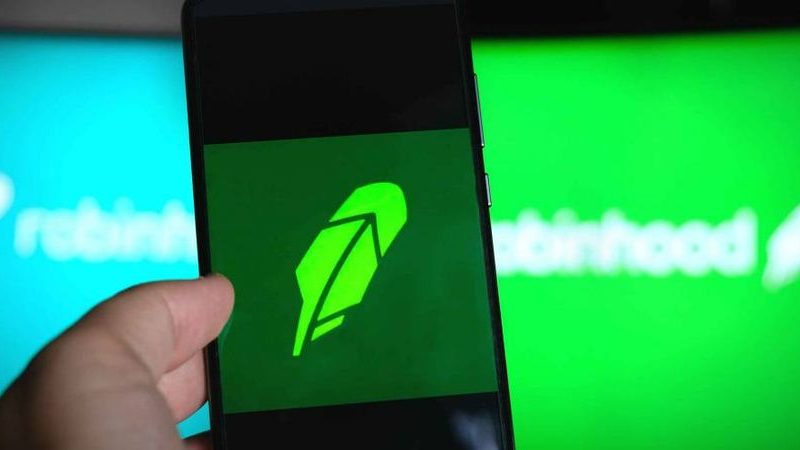Stash, Acorns, and Robinhood are three of the most popular options for investing online or on your mobile. Each was created with the goal of making investing easier for regular investors by providing simple apps that are simple to use and comprehend. While there are larger brokerage firms, they are unquestionably the most vibrant. Although all three provide several investment options, it’s vital to recognize the differences, particularly because only two of the three allow you to invest in specific stocks (Acorns vs Robinhood vs Stash). The distinctions don’t end there, and you should be aware of what you’re getting yourself into before signing up with any of them.
So, in general, this post will fully diagnostic on all three options (Acorns vs Robinhood vs Stash).
However, looking at this logically, this also means examining Robinhood vs Stash, Acorns vs Robinhood, and Acorns vs Stash.
Let’s set the ball rolling without delay…
Overview: Acorns vs Robinhood vs Stash
When compared to long-standing companies like Vanguard, Fidelity, or Charles Schwab, all three of these online brokerage platforms are relatively new to the market. It’s simple to register an account with any of these companies if you have a mobile device, such as an iPhone or Android. However, each provides unique services, so it’s important to understand how they differ.
Robinhood
For starters, Robinhood has been ranked over the years as one of the most well-known online investment platforms available. Due to their hedge fund backing, the company made news earlier this year when they were accused of suffocating meme stock surges, such as the short squeeze on Gamestop ($GME) shares. Robinhood, on the other hand, still has a lot to offer its users.
Opening an account with Robinhood is free, and you can make as many transactions as you like. Trading commissions are not charged by Robinhood, which is a practice that has become rampant across the industry. You may invest in equities, exchange-traded funds (ETFs), options, and even cryptocurrency using the platform.
Read Also: ROBINHOOD REVIEW: Why Robinhood is Bad (+ Detailed guide)
Acorns
Acorns takes a different approach, allowing consumers to invest in individual companies but not in mutual funds. It works as an investment account that invests for you. For the most part, Acorns accounts come in two categories:
- Acorns Personal: This package includes a bank account, a basic taxable investing account, and a SEP, Roth, or conventional IRA.
- Acorns Family: This includes everything mentioned above, as well as an Acorns Early account, which is a savings account for your children.
At a minimal cost, this brokerage can give an all-in-one solution. However, for some, the inability to invest in specific stocks may be a deal-breaker. But then, you, set up periodic deposits, card roundups, and even earn more by buying with specific Acorns partners.
Background Story
Acorns began with solely automated investment for $1 per month and has since expanded to include retirement accounts and bank accounts through acquisition. Acorns Lite, the entry-level plan, is available for $1 per month. For $3 per month, Acorns Personal includes a bank and retirement account, and for $5 per month, Acorns Family contains the entire suite of Acorns products. Acorns Family contains everything that Acorns Personal does, plus the ability to invest for your children.
Acorns may be one of the finest solutions if you want to maintain all of your finances in one app. But, for the time being, we’ll concentrate on the investment aspects. Although it isn’t free, it is still a very low-cost and accessible choice for beginning investors.
Stash
Stash can be thought of as a hybrid of Robinhood and Acorns. It supports a wide range of accounts, including taxable brokerage accounts, retirement accounts, and a banking account with a debit card, although it charges higher fees.
Like any other brokerage, a Stash brokerage account allows you to invest in ETFs and individual stocks as you see fit, however with fewer options. Stash also has the advantage of making investment recommendations depending on your objectives and financial position. Basically, it offers three distinct investment levels:
Beginner: A personal investment account that provides low-cost investment possibilities. It also includes banking and insurance services.
Growth: With retirement investing and a “smart portfolio,” consumers can get tax benefits.
Stash+: This package includes two investment accounts for your children, as well as market information, banking, and insurance access.
Background Story
Stash is a simple and effective investment tool that allows you to invest with as little as a few dollars. You can open a taxable brokerage account, a retirement account, or a custodial account on Stash for any major financial goal.
For taxable accounts up to $5,000, Stash charges $1 per month, and 0.25 percent for larger accounts. Stash charges $2 per month for accounts with less than $5,000 and 0.25 percent for accounts with $5,000 or more for retirement funds. A standard IRA and a Roth IRA are both options. More on that in the fees section…
Stash does not charge any trading or brokerage commissions or fees, so you can invest in exchange-traded funds (ETFs) or fractional shares of companies.
Stash is good for beginners who are a newbie to investing because it provides recommendations for developing your ideal portfolio (similar to a Robo advisor) while allowing you to choose any supported investment. The platform accepts both regular and one-time contributions.
Fees: Acorns vs Robinhood vs Stash
Fees are modest throughout Stash, Acorns, and Robinhood, as they are with most brokerage accounts these days. Robinhood, on the other hand, is the only platform that allows customers to register an account and trade without paying any fees. A basic Robinhood account is completely free to open and use, and trades are also completely free.
It’s worth noting, though, that FINRA and the SEC charge fees for some kinds of transactions. But then, these fees are infinitesimal (a few thousandths of a cent per share in some cases) and may only apply to trades of more than 50 shares at a time. This only concerns the monthly fee that you will be charged if you want to trade on margin with Robinhood. If you upgrade to a Robinhood Gold account for $5 per month, you can do so, albeit any margin over $1,000 will incur a 2.50 percent interest charge.
On the other hand, if you wish to open an account with Acorns or Stash, you’ll have to pay. You may get an Acorns automated investment account, a bank account, and the ability to use an individual retirement account for only $3 per month with the most basic Acorns account, the Acorns Personal plan. In addition to the above, the $5 per month Acorns Family package gives access to custodial accounts for children. Acorns does not allow you to trade individual stocks, so you won’t have to worry about commissions or trading fees.
Stash’s price structure is identical to Acorns’, with three tiers of monthly fees. You can receive a taxable investment account, a bank account with a debit card that provides you shares when you make purchases, investment counseling, and life insurance for $1 per month (Stash Beginner). You can get an IRA and retirement savings guidance if you pay $3 per month for the Stash Growth package. The most expensive option, Stash+, costs $9 per month and includes two custodial accounts for children as well as more personalized investing advice. Stash allows you to trade individual stocks and ETFs without incurring any trading fees or charges.
Services & Features: Acorns vs Robinhood vs Stash
Stash, Acorns, and Robinhood all provide slightly different services and features, with Stash providing the most comprehensive bundle of both savings and investment accounts. However, depending on your goals, it’s possible that you’ll need to examine more than one platform.
When it comes to simple trading, Robinhood is by far the finest of these three online brokerages. You can trade stocks, ETFs, options, and cryptocurrencies with a free Robinhood account.
With an Acorns account, you can’t trade anything individually, and even Stash’s trading capabilities are limited.
Meanwhile, despite its dynamic trading platform, Robinhood’s abilities are limited to investment. In other words, Robinhood will not allow you to open IRAs, savings accounts, or checking accounts. Even so, Robinhood is free to use, but for $5 per month, you may upgrade to a Gold account that allows you to trade on margin. You can get up to $1,000 in margin with this account, but everything over that will earn you a 2.50 percent interest rate. Users can also get investment information from Robinhood, including as analyses, earnings reports, and other financial news.
Individual stocks or other specific investments are not allowed to be traded on Acorns. Instead, it takes care of the investing for you and works more like an accumulation account, pushing users to save with features like debit and credit roundups that go straight to savings. Acorns, like Stash but not like Robinhood, offers a variety of service levels. The Acorns Personal plan includes the ability to set up an IRA for retirement, while the Acorns Family plan includes the ability to set up custodial accounts for your children. In fact, Stash’s account tiers are very identical, except the top tier costs $9 per month and includes specific investing advice.
Read Also: Webull vs Robinhood: 2022 Comprehensive Review (The Verdict!!!)
Acorns and Stash are very comparable services in that they make investing and saving simple and affordable through minimal monthly fees. Checking accounts, debit cards, retirement accounts, custodial accounts, and individual investment accounts are all available using them. They all make it simple for you to generate extra money. Furthermore, the stock return feature on Stash’s debit card works similarly to a cashback card. Then you may earn extra with Acorns by purchasing with partner brands.
The primary distinction between Acorns and Stash is that Stash allows you to invest in specific equities and ETFs. However, when compared to Robinhood’s capabilities, the trading functionality is severely limited. Because you’ll only be able to trade at particular times of day, it’ll be far more difficult to time the market or profit from short-term price movements. You’ll also have access to a smaller number of investments, however, Stash claims to prioritize socially responsible investing. Although, it is a step up from Acorns, as you won’t be able to manage your portfolio nearly as well with Acorns.
The Online and Mobile Experiences: Acorns vs Robinhood vs Stash
Stash, Acorns, and Robinhood are all mobile app-centric brokerage systems, unlike many of the larger competitors in the brokerage sector that offer robust mobile apps and desktop interfaces. The Apple App Store and Google Play Store both have apps for each brokerage. Each is, in turn, meant to be a mobile experience, so you’ll see the most functionality there, even if you can access some features by logging in from your desktop or laptop.
The Robinhood app has a good reputation, albeit it suffered a knock when it was in the news earlier in 2021. On the Google Play Store, Robinhood has a rating of 3.8 stars out of 5 as of this writing. It has a somewhat higher rating on the Apple App Store, with 4.1 stars out of 5 stars based on millions of reviews.
Read Also: ROBINHOOD INVESTMENTS: Top 2021 Robinhood Investment
You can use Acorns on a desktop computer to access some functions, but the platform is designed to be used on a mobile device. Its smartphone app is also well-received. The Acorns app has a 4.3 out of 5-star rating from over 150,000 reviews on the Google Play Store as of this writing. The Apple App Store offers it a 4.7-star rating out of a possible 5-star rating. Around 800,000 people have reviewed the Apple version.
Stash is available as a mobile app as well as primarily on the desktop, providing it the best overall capabilities of the three companies. On the Google Play Store, Stash’s app has a rating of 4.2 stars out of 5 based on 75,000 reviews. On the other hand, Stash’s app has a 4.7 out of 5-star rating and over 250,000 reviews on the Apple App Store.
Overall, each of these brokerage platforms provides a good online and mobile experience, owing to the fact that they were created in response to a desire for simple, online brokerage platforms that anybody could use.
Who Are They Most Appropriate For?
Depending on your needs, any of these three options will suffice.
- Stash is ideal for new investors who wish to learn more about investing. Its unique combination of self-directed and automated investing alternatives can teach you a lot about how to invest.
- For active traders, Robinhood is the finest option. If you have some experience and are seeking for low-cost, self-directed stock, ETF, options, and cryptocurrency trading, here is the place to go.
- Acorns is ideal for those who don’t want to deal with the hassle of investing. It’s something you can set and forget. This is long-term investing at its finest.
What Do They Have in Common? ( Acorns vs Robinhood vs Stash)
All three services have a lot to offer. Let’s start by looking at how they’re comparable.
- Minimum Investment – There is no requirement for a minimum investment to begin using any of the services.
- Investment Account Types — Each of the three types of accounts includes a taxable account.
- Investment Types — ETFs are available through all three providers.
- Mobile Apps – Investing with an Android or Apple mobile device is emphasized by all three providers.
What Makes Them Distinct?
Let’s compare and contrast the differences between Stash, Robinhood, and Acorns even though it is pretty obvious from the information above.
Fees
- For its basic account, Robinhood charges no commissions or account fees.
- Depending on your service tier, Acorns charges $1, $3, or $5 per month.
- For accounts under $5,000, Stash charges $1 per month, and for accounts over $5,000, 0.25 percent each year.
Service to Customers
Email and phone support are available from Stash. Both Acorns and Robinhood exclusively offer email support. However, there isn’t a phone number to call.
Security
All three of these apps encrypt and secure data in accordance with industry standards. Your account with Stash, Robinhood, or Acorns should be safe as long as you use a strong password. All of them are regulated financial institutions that abide by federal legislation.
Who Should Use Robinhood, Acorns, and Stash?
Robinhood is for you if you’re searching for a straightforward method to invest in a large range of stocks, ETFs, and even cryptocurrencies. While you won’t have access to savings accounts, checking accounts, or other wealth management tools as you would with Stash or Acorns, Robinhood is by far the best for pure investment. When contrast to Stash or Acorns, you can trade as much as you want with relatively few constraints.
On the other hand, Acorns is great for people who don’t want to deal with investing. If you want to focus on saving and investing for retirement at the same time, Acorns makes this easy. You can save to invest, save for retirement, or even invest for your children with custodial accounts, which offer many layers of investment and savings options. Just make sure you’re good with not being able to choose your own investments; something you won’t be able to do with Acorns.
Stash is a great option for those searching for a blend of savings and self-directed investing. Stash is effectively a hybrid of Robinhood and Acorns, however, it lacks the capability of either app on its own. It provides investment advice, but automating your money is not that simple. Individual stocks and ETFs are still available; not as many as with Robinhood. You also don’t have as much freedom with trades because they only process at specified times, which is something to be aware of. Stash, on the other hand, is the most versatile of the three platforms.
Can You Actually Make Money on Stash?
Definitely, yes, you can actually make money on Stash considering the kinds of systems in place when it comes to functionality and features.
Is Your Money Safe in Robinhood?
Yes, Robinhood is completely risk-free. This is because Robinhood is a member of the SIPC. In other words, your funds are protected up to $500,000 for securities and $250,000 for cash claims. Furthermore, because Robinhood is a securities brokerage, the Securities and Exchange Commission regulates securities brokerages (SEC).
Why Is Stash Bad?
Some reasons why users think of Stash as bad include;
High monthly fees – The monthly fees might be quite high, especially if your account balance is low. Expensive funds – The ETFs available through Stash are quite varied. They do, however, have a high expense ratio, which may reduce your long-term profits.
Is Stash Legit and Safe?
Yes, Stash is an app that lowers the entrance bar for people who want to start investing. The software also includes a Green Dot Bank-backed bank account. Stash is also a U.S. Securities and Exchange Commission-registered financial advisor (SEC).
Are Stash and Acorns the Same?
Acorns and Stash are financial apps for those who want to grow their investment but don’t have the time or knowledge to handle it. Stash is more likely to appeal to DIY, hands-on investors, whereas Acorns is better suited to investors who wish to outsource their investment management.
Conclusion
Each of the three apps, Stash, Acorns, and Robinhood, has a distinct function. Whether you should employ one or the other is entirely dependent on your goals for your brokerage platform. The one thing they all have in common is that they’re both relatively new to the market. If you don’t want to work with an older institution like Fidelity or Vanguard and want a slick, modern platform to help you save and invest your money, any of these could be good possibilities for you.
When it comes to investing, Robinhood has the most options, while Acorns is a wonderful alternative for set-it-and-forget-it savers. Stash has the best of both worlds, but with a little less functionality. Depending on your needs, all three are good online brokerage choices.
Related Articles
- Short Term Investment: Best Short Term Investments with High Returns in UK
- Stock Trading For Beginners: Best Sites For Beginners (Detailed Guide)
- Fidelity 401k: login, Withdrawal & all you should know!
- FIDELITY VS ROBINHOOD: How to Decide Which is Best (Detailed Review)
- Webull vs Robinhood: 2023 Comprehensive Review (The Verdict!!!)
- MONEY INVESTMENT FOR BEGINNERS 101: Best 2023 Option & Apps (Updated)






